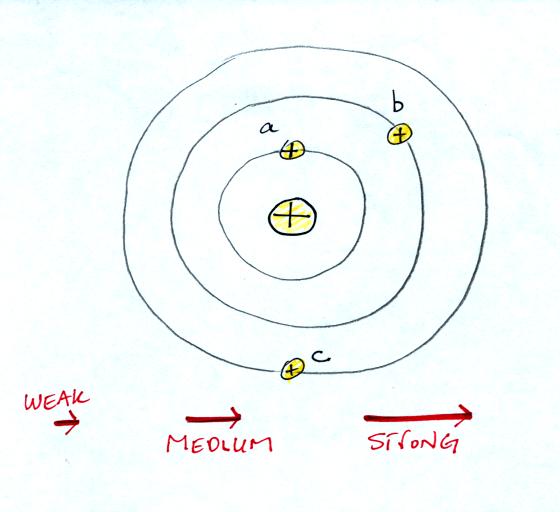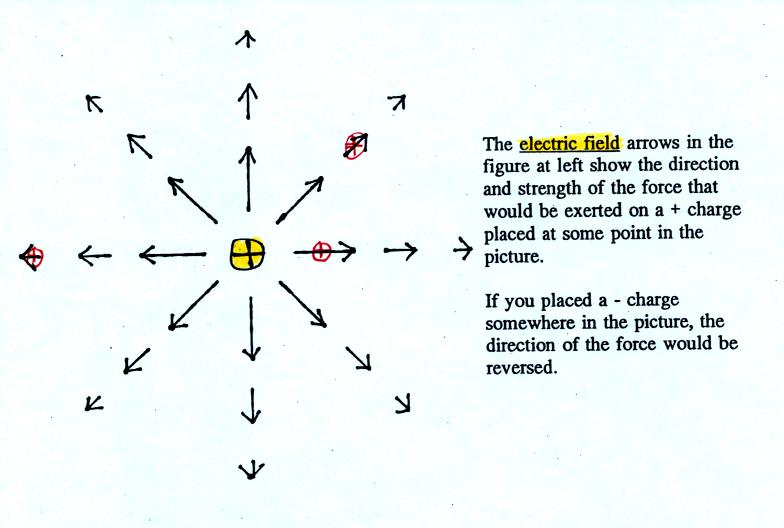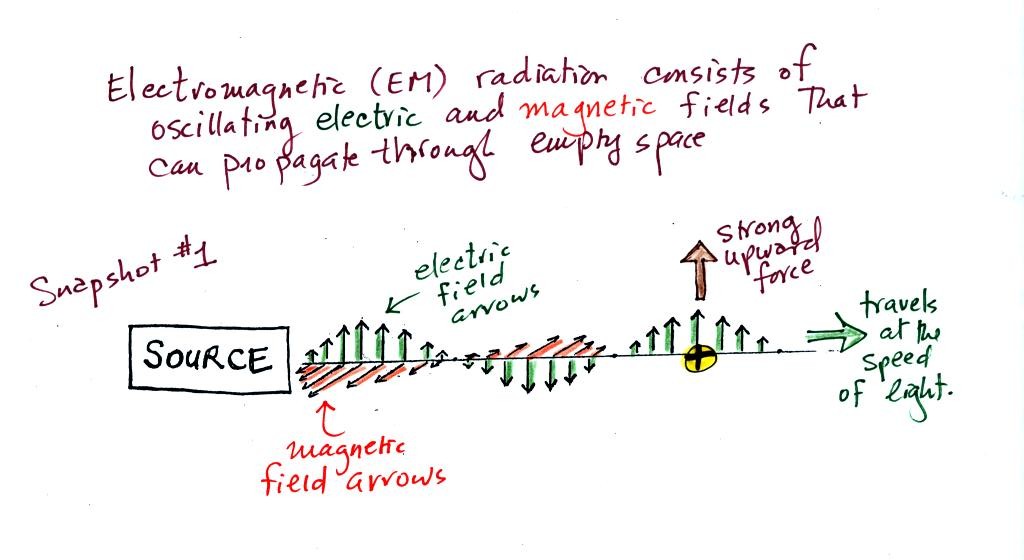Friday, Oct. 1, 2010
click here
to download today's notes in a more printer friendly format
Three songs before class today ["Rich Woman", "Sister Rosetta Goes
Before Us", and "Gone,
Gone, Gone (Done Moved On)"] from the Robert
Plant & Alison Krauss "Raising Sand" CD.
The Bonus 1S1P Assignment was collected in class today. I'll try
to get those graded quickly (next Wednesday?). The Assignment #1
reports on the
Ozone Hole and Radon are still being graded but should also be done
soon.
A student in the class asked me whether I had any more sample questions
that she could use to prepare for the quizzes. To be fair I feel
like I should give everyone in class access to the same materials so here is what I
came up with. The questions cover material in the this week's
class notes up to, but not including, electromagnetic radiation.
There'll probably be another set later next week.
3 Pictures of the Day in class this afternoon. The first was from
the March 2005 issue of National Geographic. A Buddhist
monk was standing in a frigid waterfall. The caption for the
photograph read "To focus the mind and increase awareness of self,
Shingon Buddhists like Souei Sakamoto practice takigyo,chanting
for
hours
while
standing
in frigid waterfalls at the Oiwasan Nissekiji
Temple in Toyama, Japan." (I can't really scan the photograph and
include it in the classnotes because of copyright laws)
A second photograph from the December 2005 issue showed a monk hanging
from a tree by his feet. The caption there read "To
see
life
as
it
truly
is
-
that's the goal of a student in China who
strengthens mind and body under the rigorous tutelage of a Shaolin kung
fu master."
You'll have to come to my office
to see the 3rd Picture of the
Day. It is a drawing from a former NATS 101 student.
Perhaps the most amazing example
of a physical and mental task (not mentioned in
class) is the
1000-day challenge undertaken by the "marathon
monks" of Mount Hiei, Japan.
Why am I interested in Buddhist
Monks? I spend a lot of time
riding my bicycle
uphills. It's not really painful but can definitely be
uncomfortable. I've
noticed that you can sometimes be distracted by a thought and ride a
mile or so and completely blank out the discomfort. With some
"Buddhist monk like" training I wonder if maybe I couldn't ride uphill
more or less indefinitely and not feel any discomfort at all. In
the winter it is sometimes cold in the morning when I'm out
riding my bike. With some mental training
I hope be to be able to block out the feeling of
cold fingers and toes. I'm not there yet but will continue to
work on it.
Latent
heat energy transport was the next topic of the day.
Energy
transport in the form of latent heat is the second most important
energy transport process (second only to electromagnetic
radiation).
If you had an object that you wanted to cool off quickly you could blow
on it. Or you could stick it into some water, that would cool it
off pretty quickly because water will conduct energy more rapidly than
air. With a really hot object immersed in water,
you'd probably hear a brief sizzling sound, the sound
of boiling water. A lot of energy would be taken quickly from the
hot object and used to boil (evaporate) the water.
Latent heat energy transport is sometimes a little hard to visualize
or understand because the energy is "hidden" in water vapor or water.

Latent heat energy transport is
associated with changes of
phase (solid to liquid, water to water vapor, that sort of thing) A
solid to liquid phase change is melting, liquid to gas is
evaporation, and sublimation is a solid to gas phase change (dry ice
sublimates when placed in a warm room, it turns directly from solid
carbon dioxide to gaseous carbon dioxide).
In
each case energy must be added to the material changing phase.
You can consciously add or supply the energy (such as when you put
water in a
pan and put the pan on a hot stove) or the phase change can occur
without you playing any role. In that case the needed energy will
be
taken from the surroundings. When you step out of the shower in
the morning, the water takes energy from your body and
evaporates. Because your body is losing energy your body feels
cold.

The object of this figure is to give you some appreciation for the
amount of energy involved in phase changes. A 240 pound man or
woman running at 20 MPH has just
enough
kinetic energy (if you could capture it) to
be able to melt an ordinary ice cube. It would take 8 people
running at 20 MPH to
evaporate the resulting water.
When you freeze water and make an ice cube energy is released into the
surroundings. You can picture the released energy as being
equivalent to a 240
lb person running at full speed.

You can consciously remove energy from water vapor to make
it
condense
or from water to cause it to free (you could put water in a
freezer; energy would flow from the relatively warm water to the
colder surroundings). Or if one of these phase
changes occurs energy will be released into the surroundings (causing
the surroundings to warm). Note the orange energy arrows have
turned around and are pointing from the material toward the
surroundings.
A can of cold drink will warm more quickly in warm moist surroundings
than in warm dry surroundings. Heat will flow from the warm air
into the cold cans in both cases. Condensation of water vapor is
an additional source of energy and will warm that can more
rapidly. The condensation may actually be the dominant process.
You feel cold when you step out of a shower and water on
your body
evaporates. The opposite situation, stepping outdoors on a humid
day
and actually having water vapor condense onto your body never happens
(it can happen
to your sunglasses but not to you, your body is too warm). If it
did
happen it would warm you up.
This figure shows how energy can be transported from one
location to another in the form of latent heat. The story starts
at left in the
tropics where there is often an abundance or surplus of sunlight
energy. Some of the incoming
sunlight
evaporates ocean water. The resulting water vapor moves somewhere
else and carries hidden latent heat energy with it. This hidden energy
reappears when something (air running into a mountain and rising,
expanding, and cooling) causes the water vapor to condense. The
condensation releases energy into the surrounding atmosphere.
Energy arriving in sunlight in the tropics has effectively been
transported to the atmosphere in Tucson.
We'll
spend the next two or three class periods on electromagnetic
(EM) radiation. It is the most important energy transport process
because it can travel through empty space. The notes that
follow are quite a bit more
detailed than those written down in class.
To really understand EM radiation you need to know something
about electric
fields. To understand electric fields we need to quickly review a
basic rule concerning static electricity.
We did a short not very impressive static
electricity demonstration using a sweater and
two balloons.
Each balloon was rubbed with the sweater (acrylic
fiber and wool). The
balloons (and the sweater) became electrically charged (the balloons
had one polarity of charge, the sweater had the other).
We
didn't
know
what
charge
the
balloons
carried
just that they both had the same charge.
If you bring the balloons close to each other they are
pushed apart by
a repulsive electrical force.
The sweater and the balloon carry opposite
charges. IF
they are
brought together they experience an attractive electrical force.
The strengths of the attraction and repulsion are exagerated a little
bit in the figures above.
Our next step in understanding EM is to learn something
about electric
field arrows. Imagine placing a + charge at the three
positions around a center charge as shown in the figure
below.

Then choose one of the three arrows
at the bottom of the picture to show both the direction and the force
that would be exerted on each charge.
Here's the answer. The closer
the charge is to the center, the greater the strength of the outward
force. With just a little thought you can see that if you were to
place + charges at other
positions you would quickly end up with a
figure that looks like the pattern at the bottom of p. 59 in the
photocopied ClassNotes.
The electric field arrows in this
picture show the direction and give an idea of the strength that would
be exerted on a positive placed at any position in the figure.
You'll find the following on p. 60 in the photocopied ClassNotes.
We imagine turning on a source of EM radiation and then
a
short time
later we take a snapshot. The EM radiation is a wavy pattern of
electric and magnetic field arrows. We'll ignore the magnetic
field lines. The E field lines sometimes point up, sometimes
down. The pattern of electric field arrows repeats itself.
Note the + charge near the right
side of the picture. At the time
this
picture was taken the EM radiation exerts a fairly strong upward force
on
the
+
charge.
Textbooks often represent EM radiation with a wavy line like shown
above. But what does that represent?
The wavy line just connects the
tips of a bunch of electric
field
arrows.

This picture was taken a short time after the first snapshot when
the radiation
had
traveled a little further to the right. The EM radiation now
exerts a somewhat weaker downward force on the + charge.
The + charge is now being
pushed upward again. A
movie
of
the +
charge, rather than just a series of snapshots, would show the
charge
bobbing up and down much like a swimmer in the
ocean would do as waves passed by.
The wavy pattern used to
depict EM radiation can be described spatially in terms of its
wavelength,
the distance between identical points on the pattern. By
spatially we mean you look at different parts of the radiation at one
particular instant frozen in time. The following figure
wasn't shown in class on Friday. This is probably where we
will start on Monday.
Or you can
describe the radiation temporally
using the frequency of oscillation
(number of up and down cycles completed by an oscillating charge per
second). By temporally we mean you at one particular point for a
certain period of time.


















